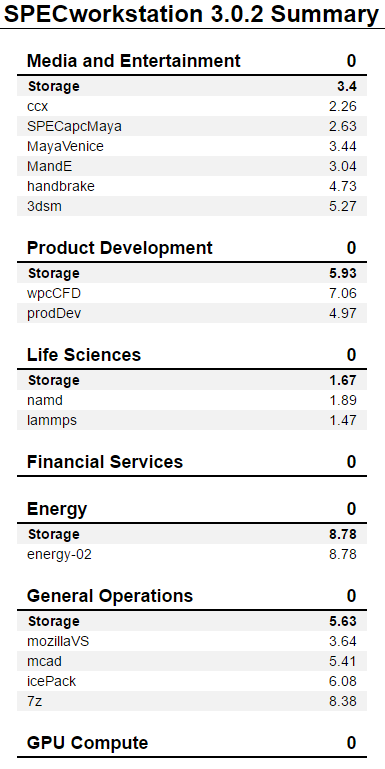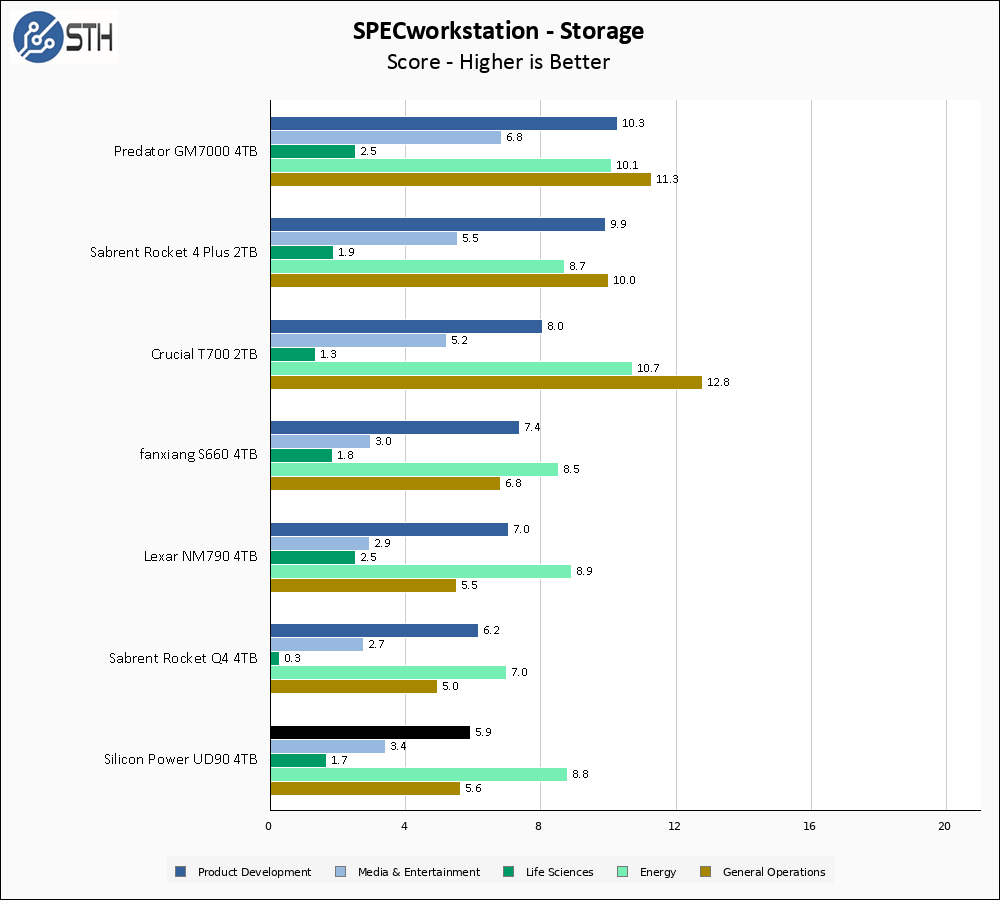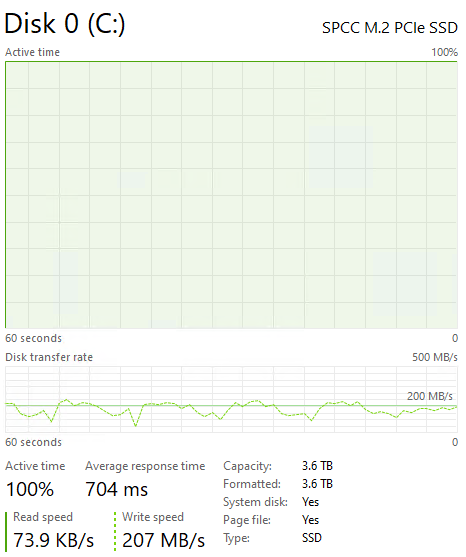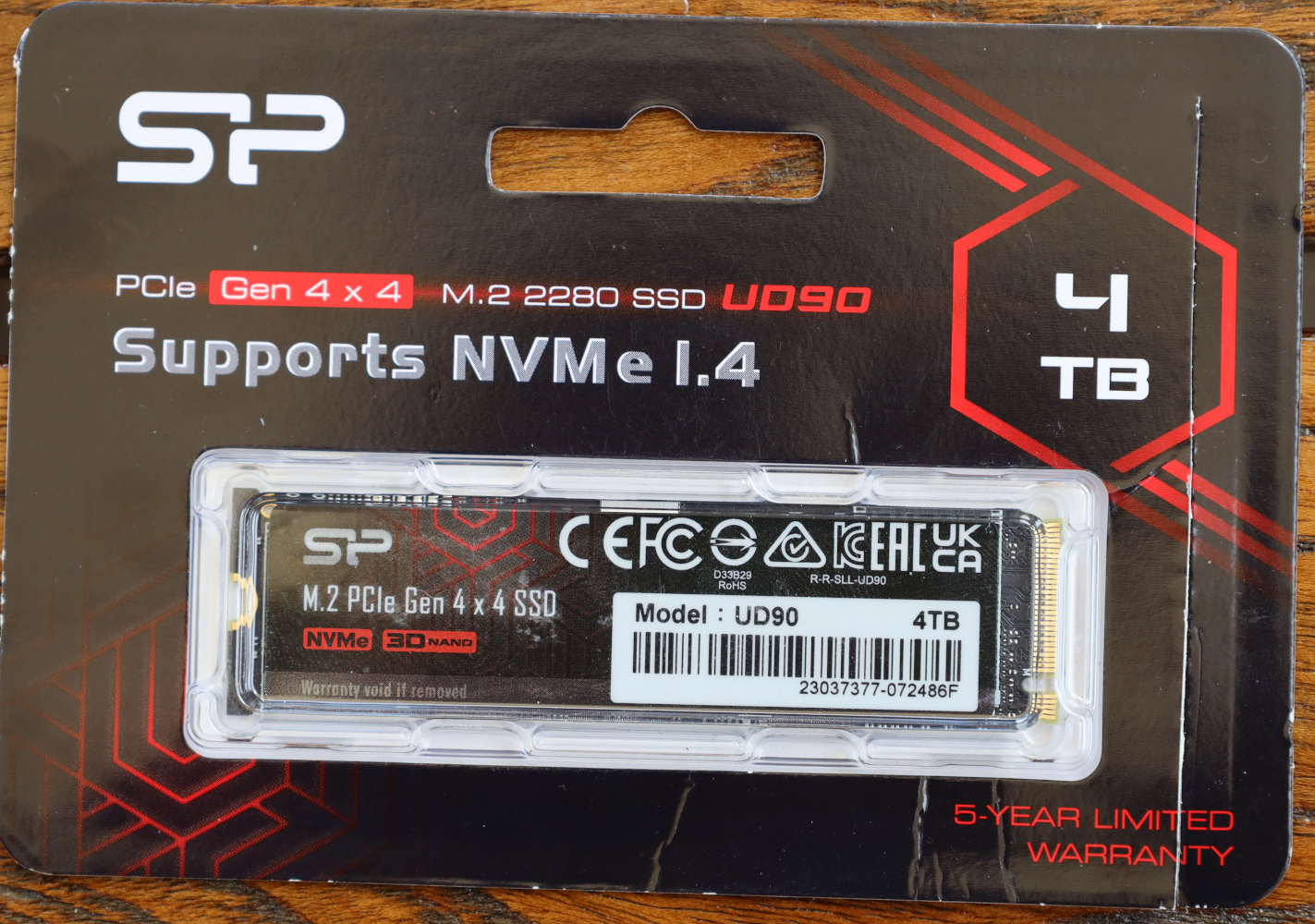SPECworkstation 3.0.2 Storage Benchmark
SPECworkstation benchmark is an excellent benchmark to test systems using workstation-type workloads. In this test, we only ran the Storage component, which is fifteen separate tests.


SPECworkstation results for the Silicon Power UD90 are once again similar to the S660, if a touch slower on the whole. These results are generally unimpressive overall.
Sustained Write Performance
This is not necessarily a benchmark so much as trying to catch the post-cache write speed of the drive. While I am filling the drive with data to the 85% mark with ten simultaneous write threads, I monitor the drive for the write performance to dip to the lowest steady point and grab a screenshot.


The S660 did not do particularly well in this test either, so this was an expected result. These drives do not do well for long sustained writes, but for most users of this class of drive, that will not be a big deal. We are still measuring the write speeds in the triple digits, so I think things are OK here.
Temperatures
We monitored the idle and maximum temperature during testing with HWMonitor to get some idea of the thermal performance and requirements of the drive.
Unlike the S770 and S880, the temperatures resulting from HWMonitor are honest, which I verified via my FLIR.

The UD90 exhibited warm but not-too-hot thermals, peaking at 66C. I never saw any thermal throttling.
Final Words
The Silicon Power UD90 4TB is available for around $180 these days, which matches the price of the Fanxiang S660. The S660 includes a heatsink, though neither drive really needs it. I will reiterate from my S660 review; that pricing is very low, and as far as I can tell these are the least expensive PCIe Gen4 4TB NVMe drives on the market. Almost all of the other Gen4 4TB drives are $200 or more, though many of those are 7GB/s drives and not 5GB/s drives, and most are TLC and not QLC so there are some differentiators.

My conclusion for this drive is essentially identical to the Fanxiang S660, except for one differentiator. Silicon Power is a name that some people, at least in the United States, have heard of. With that said, while they have a USA phone number for support, when I called it nobody answered and I was prompted to leave a voicemail. They have an online live chat for support, but when I tried to use that at 11:45 AM Central US time, I got a message that they are not available currently. I tried again several hours later and at least the autoresponder was not active, but there was still not a rapid response.
My point in all of this is that the S660 and UD90 are extremely similar, except users might think that they would have better customer support because they have heard of Silicon Power and never heard of Fanxiang. However, in my brief testing I was unable to rapidly get in contact with Silicon Power, despite their live chat and US-based phone numbers, so perhaps take that advantage with a grain of salt.
With that said, the UD90 is essentially identical to the S660. You get a whole lot of capacity for your dollars, with strong read performance as a key feature. Write performance is highly variable, but is still firmly in PCIe SSD territory. While it may not win on a performance basis, for many, having a big 4TB drive for the lowest price we can find and with OK read speeds is enough. If you were looking at 2TB capacity NVMe SSD to store files in a system, especially one in the $120-$140 range, then $40-$60 to double capacity might be worth it. The UD90 is worthy of consideration for those who just want high capacity for a low cost.
Where to Buy
Here is an Amazon Affiliate link to the drive. We may earn a small commission if you purchase through this link.
We also have a link to the Fanxiang S660 4TB for those who want to compare.




Would you trust this with 4Tb of your data? I wouldn’t…
Once you get to 1TB of data on this drive, the write speeds go below 50MB! It’s a junk drive and won’t buy SP again.
Of course is QLC, beyond of useless for storage. Is really not worthed for boot drive, hdd is even better than this.
I have it on my ps5, works fine
I bought 4 SP SSDs and 3 have failed within 10 months. That is a 75% failure rate!
I wouldn’t trust them any farther than I could throw a grand piano.
That’s unfortunate. I have had the 2tb model in a ps5 for a few months and it’s been fine. Guess I’ll run it till it quits. Least if that fails it’s not very critical.